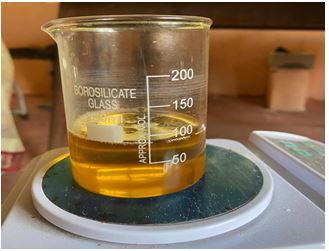A Pharmaceutico-Analytical Study of Raala Malahara and experimental evaluation of its Wound Healing Activity
DOI:
https://doi.org/10.21760/jaims.8.12.10Keywords:
Raala Malahara, Wound healing activityAbstract
Background: In present era, Skin disease has become a misery, suffering, depression and economical loss as it is becoming common and lowered threshold for seeking medical attention. Microorganisms are present everywhere in the surroundings which are responsible for large number of infectious diseases in human beings. These problems can be avoided with Malaharayogas explained by our Aacharyas. Raala Malahara is one among them which is mentioned in Rasatantra Saara Va Siddha Prayoga Sangraha. Methodology: Raw materials viz Raala, Tuttha and Tila Taila were screened and collected. Raala and Tuthha were finely powdered. Tila Taila as the base for Malahara, it was prepared with maceration procedure until a creamy, semisolid mixture occurs. This semisolid mixture is called as Raala Malahara. It was stored in glass jar containing water and every day the water was changed to maintain its properties. Raala Malahara was subjected for the Analytical studies, Phyto-chemical studies and experimental studies for its wound healing activity. Results: Results of Analytical study of Raala Malahara shows values as follows: pH value: 6.94, Loss on Drying: 61.427%, Rancidity test: Negative, Spreadability: 42mm, Fat content: 15.584%. Result of the experimental study shows that Raala Malahara possesses better results as Wound healing agents especially in excisional wounds. Conclusion: Raala Malahara possesses better results as Wound healing activity in excisional wounds.
Downloads
References
Boateng JS, Mathews KH, Stevens HNF, Eccleston GM. Wound healing dressing and drug delivery system, a review. J Pharm Sci. 2008;97:2892-2923.
Shobha GH, editor. Bhaisajyakalpana. 1st ed. Bangalore: IBH Prakashan; 2000. p. 326.
Cooper G, Gunn R. Dispensing for pharmaceutical students. 12th ed. New Delhi: CBS Publishers; 1971. p. 197.
Krishna Gopala Ayurvedic Bhavan. Rasatantra Saara Va Siddha Prayoga Sangraha. Prathama Paada, Rajasthan; 2006. Chapter - Lepa- Malahara Prakarana, Verse - 26. p. 861.
Easy Ayurveda [Internet]. 2015 Apr 24. Sarja (Vateria indica) - Uses, Dose, Research, Side Effects. Available from: https://www.easyayurveda.com/2015/04/24/sarja-vateria-indica-uses-dose-research-side-effects/
Shastry JLN. Dravya Guna Vijnana. Forwarded by Chunekar KC. Reprint ed. Varanasi: Chaukambha Orientalia; 2017. Vol. 2. p. 620-621.
Pandey G. Dravyaguna Vijnana. Reprint 2004. Varanasi: Choukambha Krishnadas Academy; 2004. Vol. 3. p. 405.
Ayurvedic Pharmacopoeia of India (API). Pharmacopeia Division, Dept. of AYUSH, Ministry of Health and Family Welfare, Govt. of India; 2001. Part 1; Vol. 4. p. 106.
Kirtikar KR, Basu BD. Indian Medicinal Plants. Vol. 1. Dehradun: International Book Distributors; 1993. p. 291.















